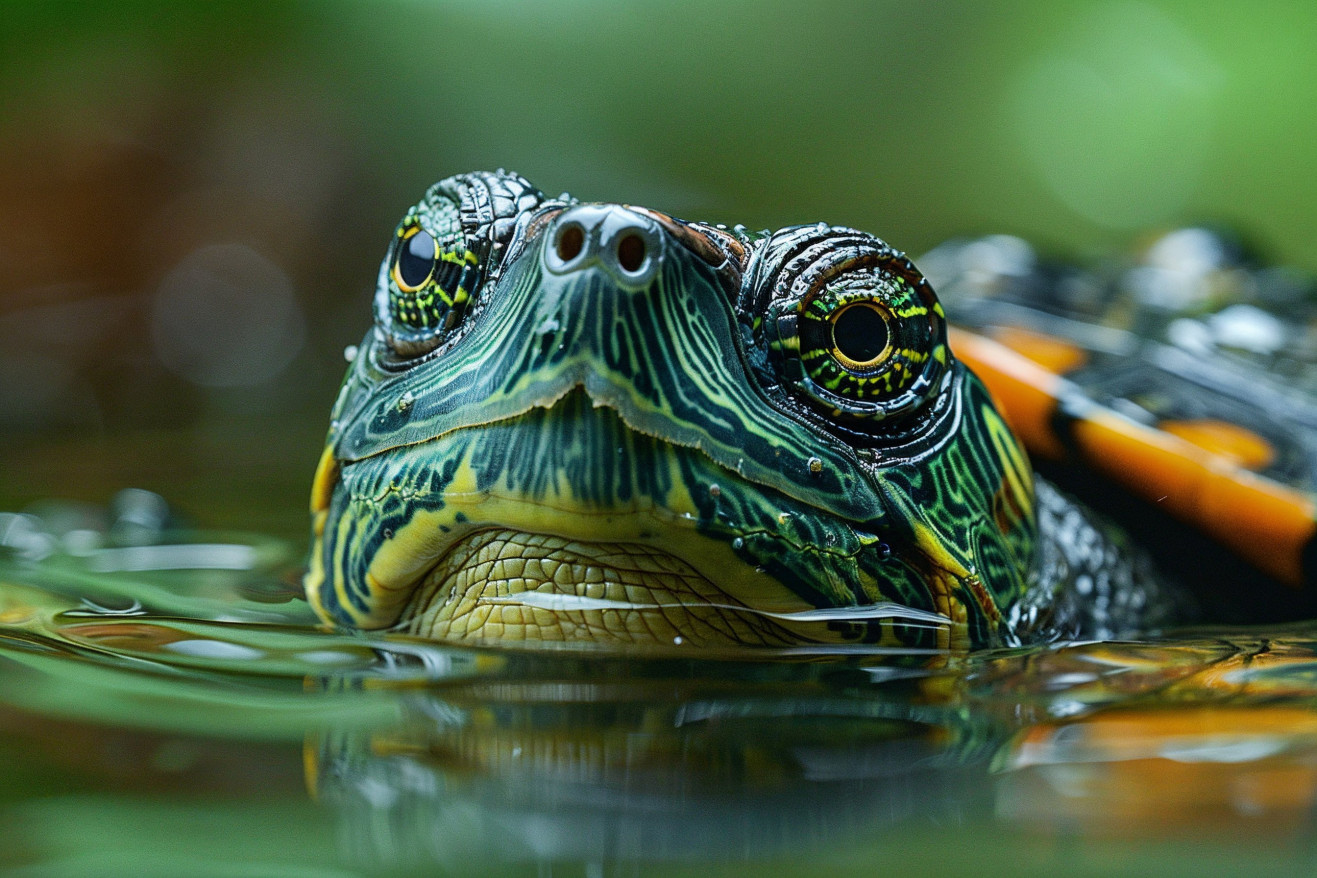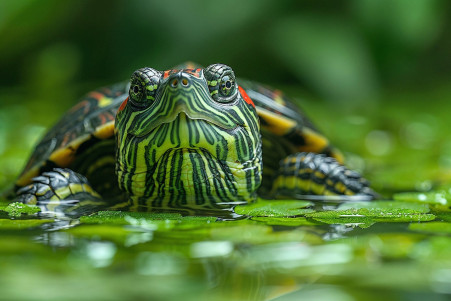Turtle Respiration: How Long Can Turtles Hold Their Breath?
1 April 2024 • Updated 1 April 2024

Although you've probably watched turtles swim around in a lake or pond, you may not realize that these reptiles have an amazing ability to hold their breath both in the water and on land. Thanks to their control over their body's oxygen consumption, turtles can hold their breath for 4-7 hours. In fact, some turtles, such as the Atlantic green sea turtle, can hold their breath for an incredible 5-7 hours while they're in the water and at rest.
By exploring research on animal biology, evolutionary adaptation, and captive and wild animal behavior, we will investigate the physiological adaptations that have enabled turtles to hold their breath for such long periods. We will also learn how different species have adapted their breath-holding abilities to meet the demands of their environments and behaviors. This knowledge will help us appreciate the resilience and endurance that turtles have developed throughout their evolution.
How long can turtles hold their breath?
Going Deeper: Respiratory Adaptations of Aquatic Turtles
Aquatic turtles have evolved highly specialized respiratory systems that enable them to stay underwater for long periods of time. Because they are ectotherms, or cold-blooded animals, turtles' metabolic rate decreases significantly in cold water, which means they require less oxygen. In fact, many species can even take in oxygen through their skin and cloaca (the opening at the back of the body) while hibernating, a process called cloacal respiration.
In addition, some turtles are able to use anaerobic metabolism (metabolism that doesn't require oxygen) when they are in low-oxygen environments. Painted turtles are especially good at this, and they can even use calcium from their shells to buffer the acid that builds up in their bodies when they are in this anaerobic state. Sea turtles have adaptations such as large lung capacity, low metabolic rates, and high red blood cell counts that help them make the most of their oxygen supplies. These physiological adaptations make it possible for sea turtles to dive to depths of more than 1,000 meters. By decreasing their need for oxygen and increasing their ability to use the oxygen they have, aquatic turtles have evolved to stay underwater for long periods of time.
Species Spotlight: The Breath-Holding Champions of the Turtle World
The ability of turtles to hold their breath varies among species and is influenced by a number of factors including body size, environment, and behavior. For example, the leatherback sea turtle is an extreme diving specialist, with dives that have been recorded to depths of over 1,200 meters and durations of more than 10 hours, according to a review of sea turtle diving behavior. Meanwhile, temperate zone freshwater turtles are able to hibernate underwater for months due to adaptations like cloacal respiration.
Even sea turtle hatchlings show diving behavior and respiratory patterns that enable them to live in the water, as demonstrated by a study of neonate sea turtles. The study found that the respiratory frequency of neonate sea turtles was over 90% lower than predicted for reptiles at the time of emergence from the nest, indicating that they are already adapted to hold their breath for long periods of time.
In addition, environmental factors such as water temperature and currents can affect how long a turtle can hold its breath, according to The Sea.Org. For instance, warmer water temperatures generally lead to longer dive times due to increased metabolic efficiency, while colder temperatures can cause turtles to surface more often. The range of breath-holding abilities in turtles is a testament to the many ways these animals have evolved to live in a variety of aquatic environments.
Breathing Techniques: How Turtles Breathe on Land and in Water
Turtles have a unique way of breathing that depends on whether they are in the water or on land. As noted in Natural Selections: Turtle anatomy | NCPR News, when on land, the innards press down on the diaphragm, which expands the lung cavity and causes the turtle to inhale. On the other hand, when in the water, the water presses on the innards, which pushes them up, contracts the lung cavity, and makes it easier for the turtle to exhale.
This difference in breathing techniques is an example of how turtles have adapted to their environment. As the article notes, "Maybe the easiest way to remember it, if you want to remember it, is that if the turtle's in the water, they breathe like we do. So if you relax, all the air goes out, and if you're on land and in the air, you don't have the support of the water and they do the opposite of us." This difference in breathing techniques is an example of how turtles have adapted to their environment. This difference in breathing techniques is an example of how turtles have adapted to their environment.
How Turtles Survive the Winter: Hibernation Techniques
For many species of turtles, winter means hibernation in the water. This can be especially challenging due to the cold and the fact that the water has lower oxygen levels. To help them get through these tough times, turtles go through a period of dormancy and reduced metabolism, which is called brumation.
While this helps them save energy, it also helps them avoid the cold and ice that can make it difficult for them to move around. Turtles can breathe underwater through their skin, mouth, and cloaca, a process known as cloacal respiration. In addition, some turtles can use calcium from their shells and skeletons to counteract lactic acid that builds up when they can't get enough oxygen.
Thanks to these adaptations, turtles can go for months without eating or breathing, and then come out of hibernation in the spring. Learning about these incredible abilities of turtles can help you better understand and appreciate the natural world.
The Amazing Ability of Turtles to Hold Their Breath
The ability of turtles to hold their breath for long periods of time is an incredible example of evolutionary adaptation. This ability has allowed turtles to thrive in a variety of aquatic habitats, from freshwater ponds to the deep sea. By learning about this respiratory marvel, we can better understand the resilience and endurance of these ancient reptiles.
Research into turtle breath-holding also offers potential insights that could be used in human medicine and conservation. As we continue to investigate the natural world, the ability of turtles to hold their breath is a testament to the many wonders that remain to be uncovered.


